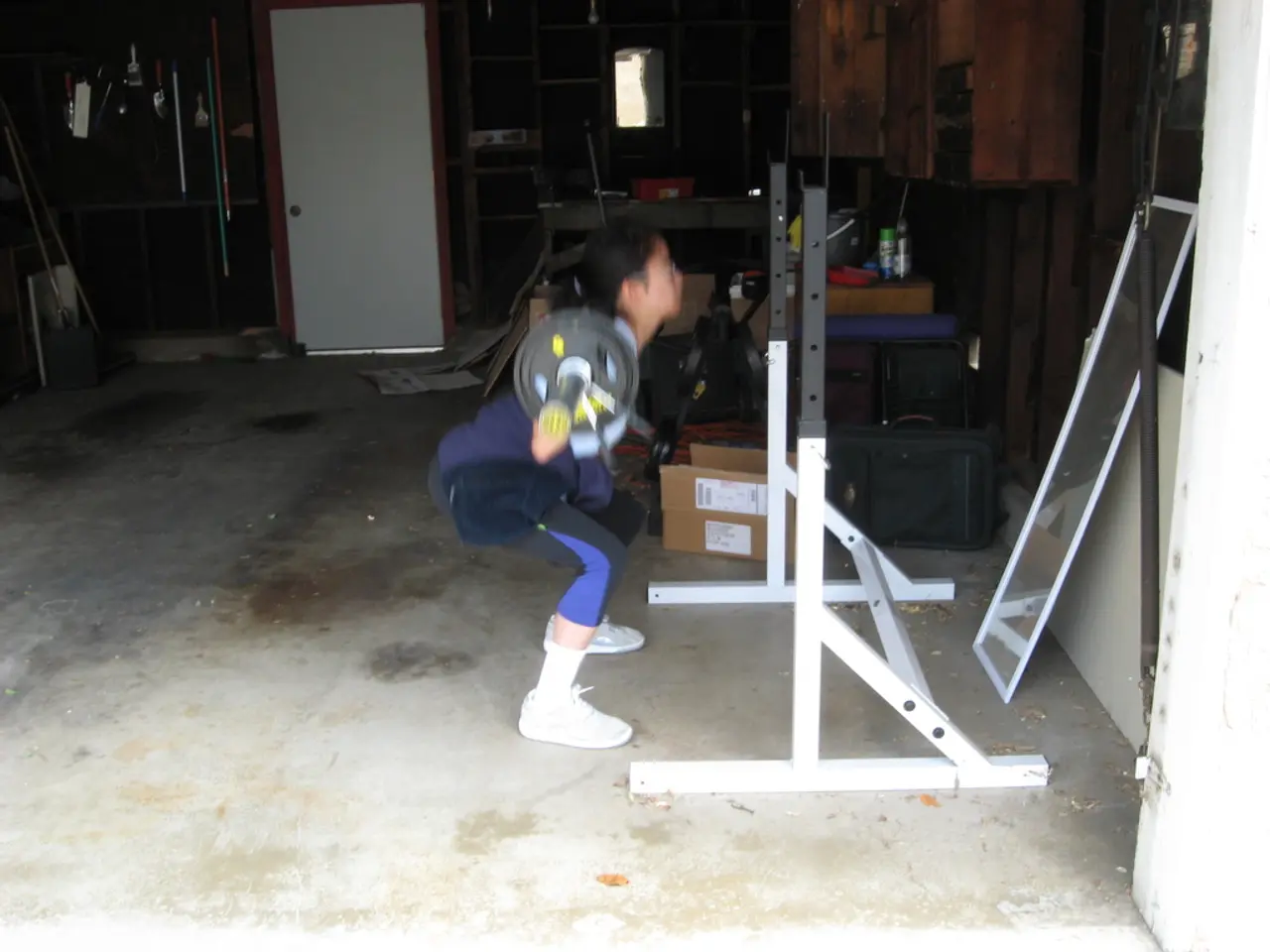Build your entire body strength with minimal equipment: Static-hold workout using dumbbells instead of gym visits
Isometric exercises, a type of strength training, are gaining popularity for their numerous physical and mental benefits. These exercises, which involve holding a static position to test muscle strength and endurance, can be easily incorporated into a home workout routine.
Physical Benefits
Isometric exercises offer several advantages for physical strength, endurance, and tendon health.
Improved Muscular Endurance
By increasing the "time under tension," isometric exercises enhance the muscles' ability to sustain force over time. This is particularly beneficial for muscles that maintain posture and stabilize the spine, such as core and back muscles.
Increased Strength and Hypertrophy
Holding isometric contractions at long muscle lengths can lead to superior muscle growth rates and better transfer of this strength to dynamic movements. A study published in the British Journal of Sports Medicine found that isometric exercises are beneficial for lowering blood pressure and improving muscular endurance, strength, and hypertrophy.
Enhanced Tendon Resilience and Joint Health
High-intensity isometric holds strengthen tendons and improve joint stability, making them useful in both athletic and rehabilitation contexts.
Better Neuromuscular Activation and Rapid Force Production
Isometric training stimulates the nervous system to activate muscles more efficiently and produce force quickly.
Injury Prevention and Safer Strength Gains
Because isometric exercises involve static holds without movement, they carry low injury risk and are effective for building foundational strength and body control, especially useful in rehabilitation and low-impact training.
Endurance Athlete Benefits
Isometric work helps reduce oxygen consumption at moderate intensities during activities like cycling, suggesting improved efficiency for endurance sports.
Mental Benefits
The mental challenge of "feeling the burn" during prolonged contractions can build resilience and perseverance, contributing to stronger mental endurance alongside physical strength. Holding isometric positions demands sustained concentration, helping to develop mental toughness and focus.
The 20-Minute Isometric Workout
To perform a 20-minute isometric workout at home, you'll need a pair of 4-10lb dumbbells, an exercise mat, and the ability to perform the following exercises: squat hold, static lunge, wall sit, biceps hold, triceps extension hold, overhead press hold, and high plank.
The workout consists of performing each exercise for 30 seconds, resting for 20 seconds, and taking a full minute of recovery in between sets, aiming for three rounds.
The Exercises
- Triceps Extension Hold: Stand with feet hip-width apart, holding a dumbbell in a vertical position, bend elbows to lower the weight behind the head, and hold this position.
- Biceps Hold: Hold a dumbbell in each hand with arms close to the sides and palms facing up, and curl the weights up to a 90° angle, holding this position.
- Overhead Press Hold: Stand with feet shoulder-width apart, press dumbbells overhead and hold this position with arms locked out.
- High Plank: Lift the knees off the floor and extend the legs behind, forming a straight line from head to heels, and hold this position with the core and glutes tight.
- Static Squat Hold: Stand with feet hip-width apart, push hips and butt back, lower as if sitting in a chair, hold when thighs are parallel to the floor, keep chest up and gaze forward.
- Wall Sit: Lean back against a wall and lower yourself until your upper legs are parallel to the floor, with knees at roughly a right angle, hold this position, and squeeze your core and butt muscles to maintain the hold.
- Static Lunge: Stand with feet shoulder-width apart, take a step back, lower until knees are at roughly 90° angles, hold position, keep chest up and body balanced by placing hands on hips, swap legs and repeat.
Warm-Up
Before starting the workout, it's recommended to do a 5-minute warm-up to increase blood flow and raise body temperature. This helps make muscles more flexible and efficient. The warm-up includes 20 repetitions each of squats, lunges, jumping jacks, hip openers, and arm circles, followed by at least 5 minutes of stretching.
Performing isometric exercises can help build a strong mind-muscle connection, making them valuable for general fitness, injury rehab, and athletic performance.
- Isometric exercises, with their potential to boost muscular endurance, strength, and hypertrophy, are a valuable addition to any home workout routine within the arena of health-and-wellness and fitness-and-exercise.
- A study in the British Journal of Sports Medicine supports the use of isometric exercises for their ability to enhance tendon resilience and joint health, making them especially beneficial for endurance athletes.
- Beyond physical improvements, isometric exercises also foster mental benefits, developing resilience, perseverance, and focus, as well as promoting better neuromuscular activation and rapid force production.




